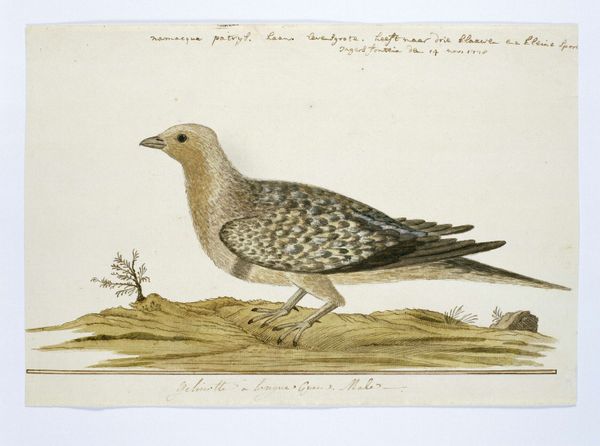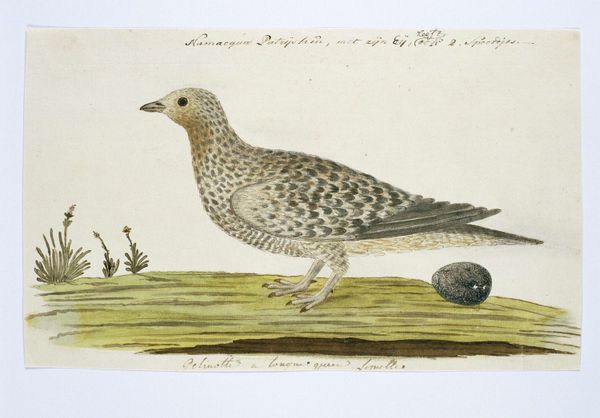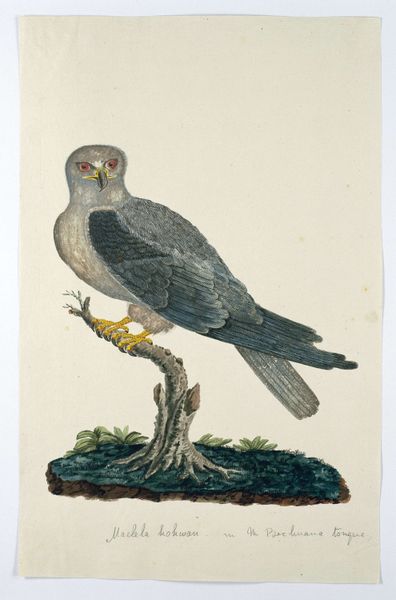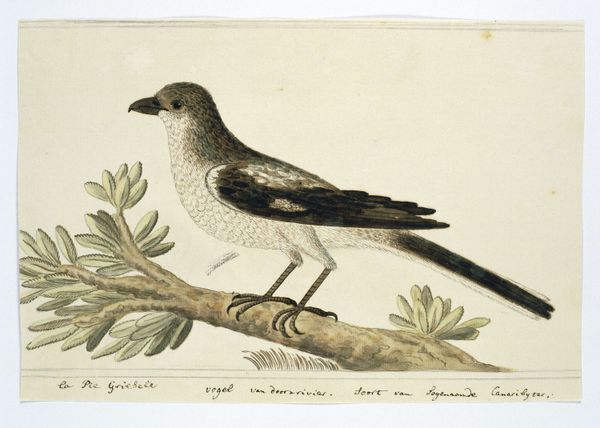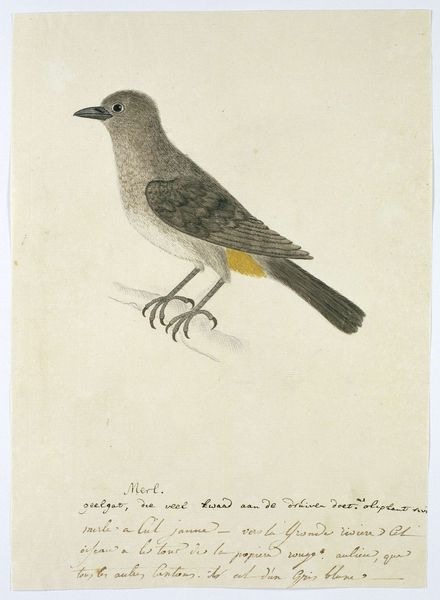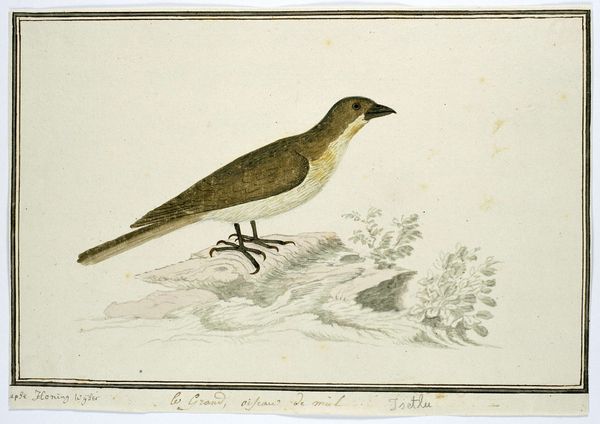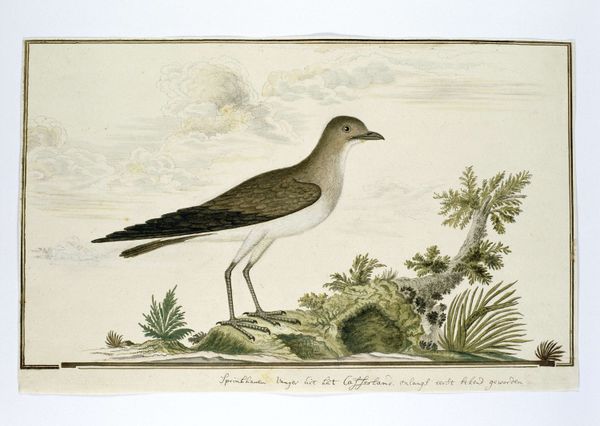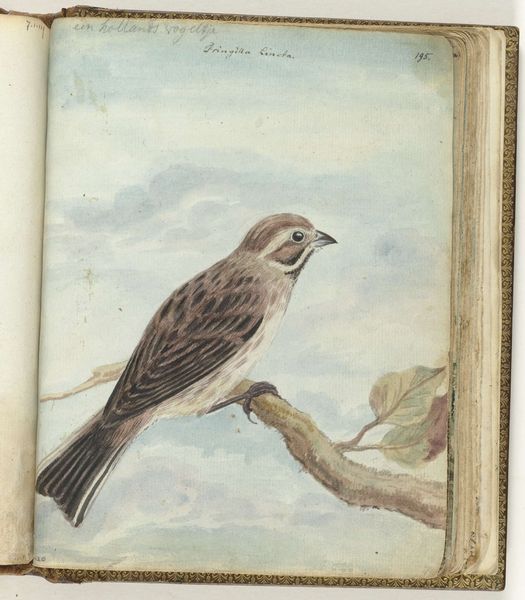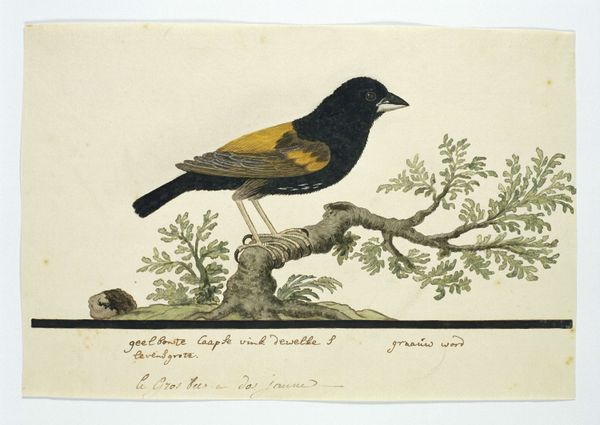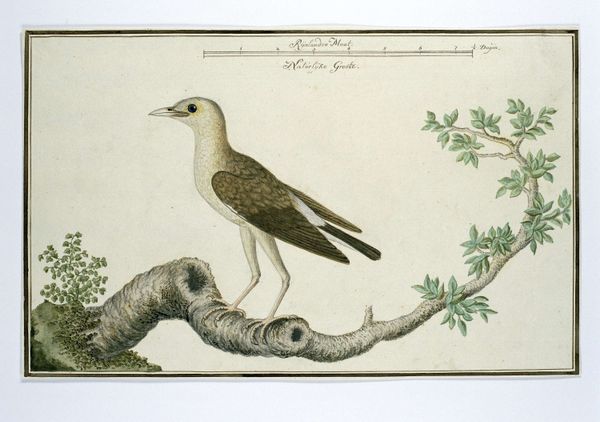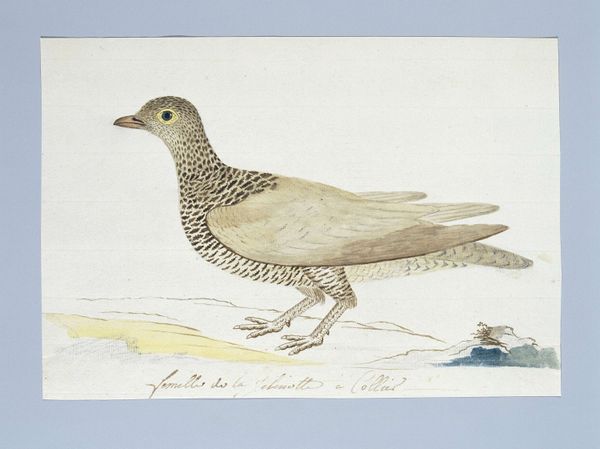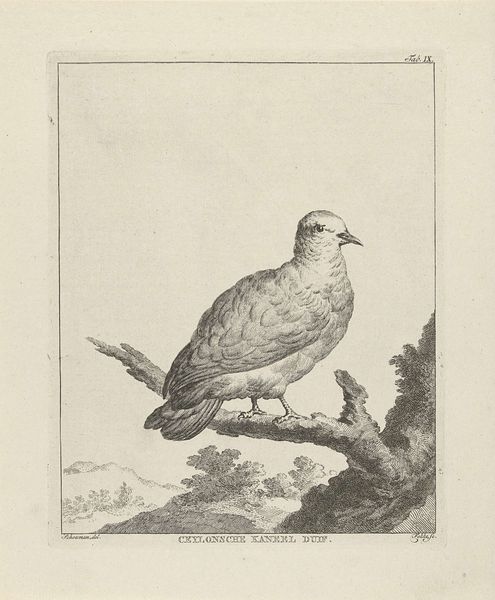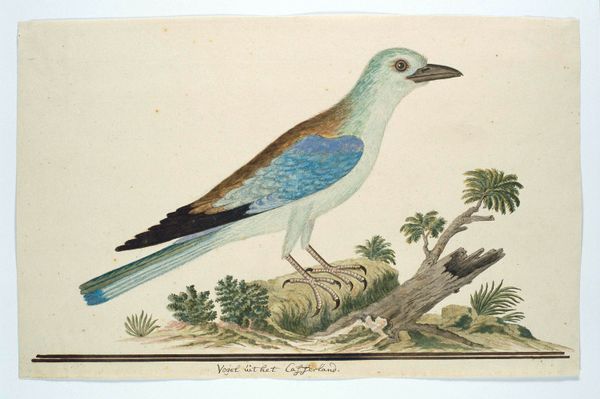
drawing, painting, watercolor, pencil
#
portrait
#
drawing
#
animal
#
painting
#
landscape
#
botanical illustration
#
figuration
#
watercolor
#
pencil
#
botanical drawing
#
watercolour illustration
#
realism
Dimensions: height 660 mm, width 480 mm, height 213 mm, width 356 mm, height 195 mm, width 356 mm
Copyright: Rijks Museum: Open Domain
Editor: Here we have Robert Jacob Gordon’s, “Falco tinnunculus (Common kestrel),” possibly from 1778. It seems to be a watercolor and pencil drawing of a kestrel perched on a branch. I notice the artist included very precise measurements, almost like a scientific record. How do you interpret this work? Curator: The inclusion of measurements immediately draws my attention to the material conditions of its production. This isn't just an aesthetic exercise, but a form of labor. Gordon meticulously recorded this bird, turning observation into a kind of colonial accounting. The paper itself, the pigments used for the watercolor – where did these materials originate? How did their trade shape the representation? Editor: That's interesting. I hadn't thought about it in terms of colonial accounting, but the detailed notes do seem to serve a purpose beyond just art. Curator: Consider also the labor involved in creating the tools necessary to make this image: the manufacture of the pencils, the processing of pigments. It’s a chain of production reaching far beyond the artist’s hand, embedding this seemingly simple drawing in a network of trade and power. Were these tools readily available, or luxury items? Editor: So you're saying the artwork itself becomes a record of these material processes? It almost makes the drawing a commodity itself, subject to the same economic forces. Curator: Precisely! We can trace the relationships between artistic production and the broader social and economic landscape of the time. Editor: I hadn’t thought about approaching the artwork that way, but I realize I need to consider these elements more often. Thank you for offering that insight. Curator: Indeed! Focusing on the means of production reveals fascinating layers we might otherwise miss.
Comments
No comments
Be the first to comment and join the conversation on the ultimate creative platform.

